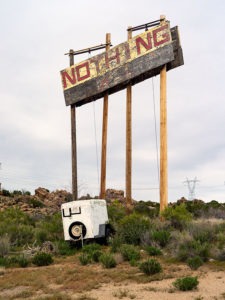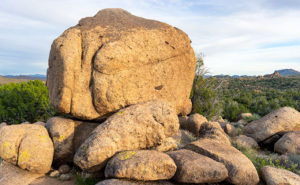
My generation is probably the last to have a love affair with automobiles. For us, cars defined who we were. They opened the country for us to explore. Now that we’re old, most of our recollections are car-centered, and I’m an example of that. Over my life, I’ve owned a varied stable of vehicles; from ones German engineered to station wagons that the Griswolds from Family Vacation would reject.
The car that still gives me the most angst was the Camaro that my parents gave as a wedding gift for my first marriage. It was special because it was the racecar version built for the original Trans-Am series. To qualify for the races, manufacturers had to produce at least 1,000 units, and they had to sell them through their dealer networks. Very few Americans knew they existed. I knew, because I read racing magazines, and after I got back from my overseas tour, I hunted one down. Their moniker came from the option package number—Z/28. After the first batch quickly sold out, Chevrolet offered them to the public.
It was British racing green with a pair of broad white stripes on the hood and trunk. Ours didn’t carry the familiar Z/28 badge on its nose; instead, it just had the numbers 302 which was its engine size. Trans-Am limited the displacement to 5 liters, and that meant that it was the smallest V8 that Chevrolet put into Camaros, but those engines were specially built and had more horsepower than the other power plants available. Since it was a high revving motor, you couldn’t get air conditioning or (gasp) power steering. Because I raced mine, I added 10” wide wheels and fat tires which made it near impossible for my wife to drive.
At the collector’s car auctions, 1968 Z/28s sometimes go for over a hundred grand, and because mine was a low chassis number, I believe it could’ve been more valuable if it were in pristine shape. But, I was living in a lot of turmoil and planned to move to Arizona where I would need an air-conditioned car, so I got a thousand dollars on trade for a Vega—possibly the worst purchase I ever made in my life.
It was mustard-yellow with a single black stripe. I wanted the GT version because it came with gauges instead of idiot lights. The dealer didn’t have one with air, so they installed an aftermarket unit, which was like bolting a cinder block to the side of the engine. Because of the weight and engine vibrations, the compressor fell off when the bolts sheered—twice. All of the gauges worked except for the water temperature, which I noted to the dealer while it was under warranty. They said they’d order one, but I don’t think that they ever did, and wound up rebuilding the engine after it seized from overheating.
My horrible decision meant that I gave away the impractical car that I loved, to buy the practical car that I hated, and that includes all the awful station wagons we’ve owned. Its gas mileage wasn’t any better than my hot rod, and with a nine-gallon tank, our gas stops doubled. The engine vibrations were so bad that I carried a screwdriver and wrench because, at each fill-up, I had to re-tighten the carburetor screws. The only fond memory I have of that car was besting the local legend—Don Roberts—at a Big Surf event. He drove a different Vega—a station wagon. That was a nice feather to have in my cap.
My second wife and I went to Las Vegas, Bullhead City, or one of those destinations involving Highway US 93. We packed the Vega—it never deserved a name—and headed north for the weekend. We planned gas stops in Wickenburg, Kingman, and Vegas—or wherever. However, because of the Vega’s limited range, we had to stop again after climbing the grade after the Santa Maria River—at Nothing, Arizona. I had to pay a buck-and-a-half for gas, which was highway robbery at the time. That makes me the only person in the world to have bought gas in this month’s featured destination—Nothing—population: 4.
The abandoned store in Nothing is at the top of the pass between the Poachie and Aquarius Mountain Ranges. Its elevation is 3700-feet, and the terrain is part of the granite boulder field that stretches from Prescott to Kingman. The store, as they tell it was, ”built by four drinking friends having nothing better to do.” It was open only a couple of years before being abandoned. I don’t remember this, but according to Wikipedia, in 2016, Century 21 ran a promotion for father’s day with the promotion line, “Give Dad Nothing for Father’s Day.” They sold 24-hour deeds to property in Nothing. The current property owner was in on the joke and buyers could download a gift card and a “Certificate of Nothing” valid on June 19, 2016, only.

So for April, I will be trying to make something from Nothing—pun intended—like this week’s featured image—Large Boulder. There’s some pretty country in the pass between the Santa Maria River and Burro Creek. My job is to find enough to produce four images for April. Do you think I’m up to it?
You can see a larger version of Large Boulder on its Web Page by clicking here. I hope you enjoy viewing this week’s post and next week; we’ll show another featured image from Nothing.
Until next time — jw
P.S. You should see my grammar checker going nuts over Nothing.
P.P.S. Speaking of old Chevys—this week I sat through a show that Queen Anne likes. I think its called The Kids Are Alright. It’s about a Catholic family with a gaggle of boys. They’re struggling to make ends meet, so they drive an old station wagon—a ’66 Chevelle. As I watched, I had to pause the show and show Her Majesty the station wagon’s nose badge. It indicated that the car had a 396 motor, but it wasn’t an SS model. Very rare and valuable.
